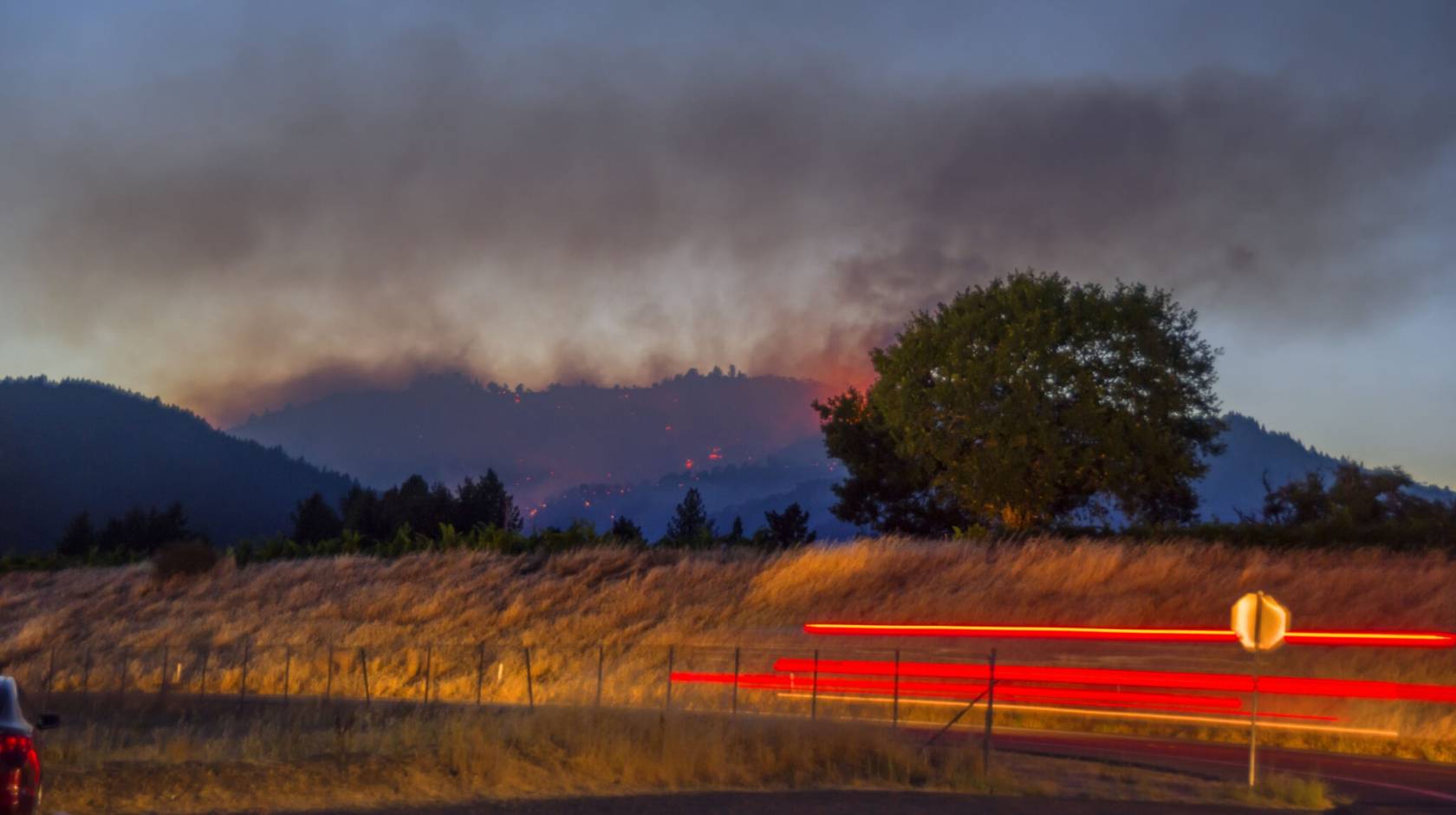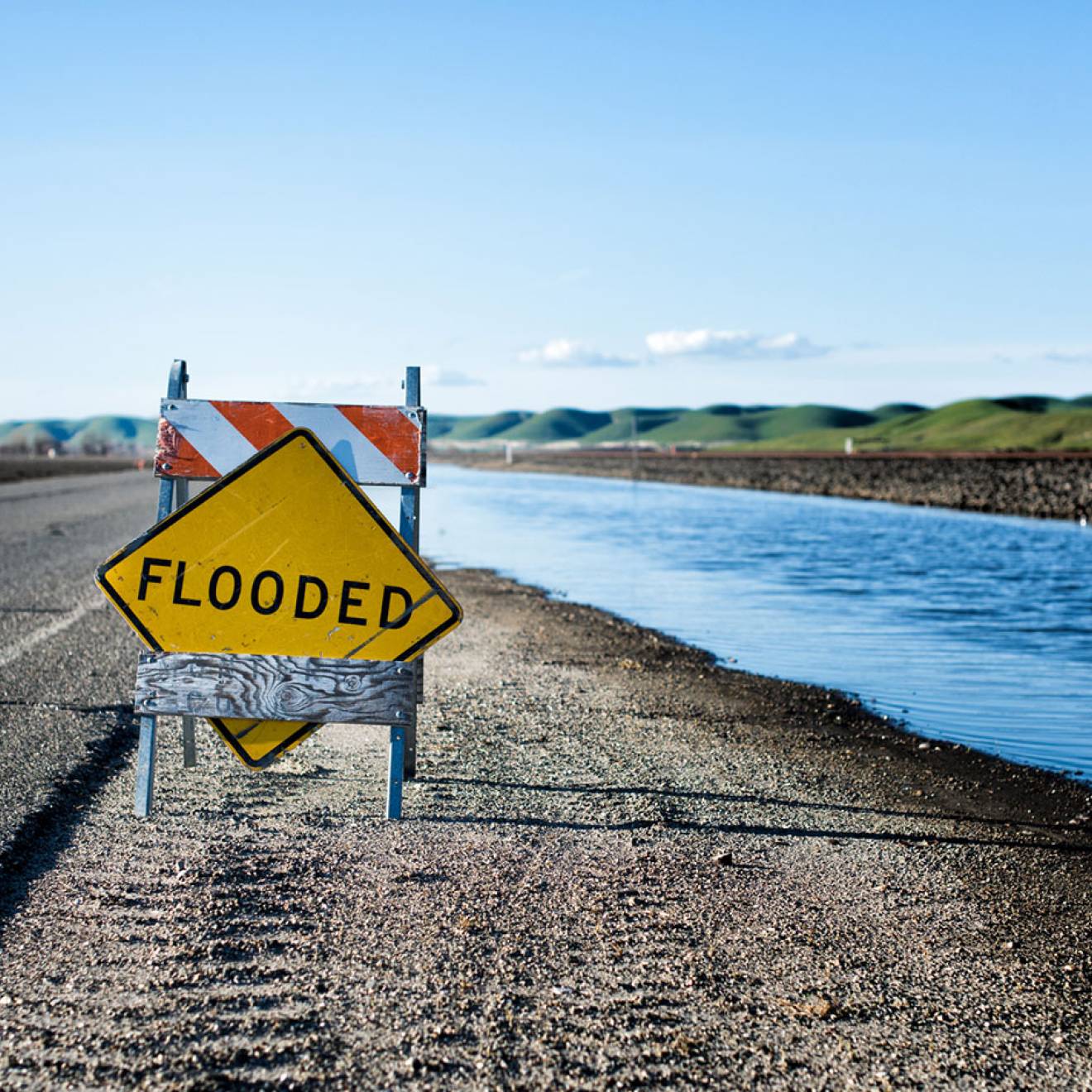Glen Martin, UC Berkeley via California Magazine

Wildfires today are not what they were in the nineteenth century — or even 20 years ago. Disastrous, history-making fires are no longer anomalies. The 2017 Sonoma County Tubbs Fire and the Camp Fire in Butte County, which utterly destroyed the town of Paradise a year later, are stark examples. Fire season, once limited to late summer and early fall, now spans the entire calendar.
But the problem isn’t just razed houses. Increasingly, Californians struggle to find private insurance to rebuild, in large part because no one wants to insure homes in the wildland urban interface zones — fire-prone areas where development abuts wildlands.
How urgent is the insurance crisis and the wildfire risks that are driving it? And what if anything can be done about them?
If any person has a firm grasp on those issues, it’s Dave Jones, the director of the Center for Law, Energy & the Environment at the UC Berkeley School of Law. Jones served as California’s Insurance Commissioner from 2011 through 2018, and he was the founder and chair of the Sustainable Insurance Forum, an international group of insurance regulators that identifies best regulatory responses for climate risk. He was also the senior director for environmental risk at The Nature Conservancy and a distinguished fellow at the ClimateWorks Foundation.
We caught up with Jones to understand what’s wrong with California’s insurance system.
This interview has been edited for length and clarity.
What’s the biggest takeaway from the state’s homeowner insurance crisis?
The insurance crisis is one price we are paying for not moving away from fossil fuels and to alternative energy sources quickly enough. And the rising cost of insurance and unavailability of insurance is a problem not just in California, but in at least 17 other states. Climate change is driving more natural disasters and more severe natural disasters — wildfires, but also tornados, hurricanes, floods, sea level rise, atmospheric river bombs, and extreme heat, to name some. It’s a long list. And skyrocketing home insurance payouts follow those events. Insurers are the canary in the coal mine for climate change.
So the insurance nonrenewal problem extends well beyond California — or even the West?
Yes. When insurance companies face higher losses or payouts, they typically respond in two ways: raise premium prices and stop renewing policies or writing new policies. California insurers are doing both. And it’s certainly not limited to California. The New York Times investigated this and found that 17 other states are seeing significant increases in policy non-renewals and rate increases due to climate change impacts. Florida and Louisiana, for example, have seen dramatic increases in non-renewals and higher premiums due to hurricane and flooding impacts. Iowa, Minnesota, Illinois, Ohio are seeing rates increase and non-renewals due to severe convective storms.
Also, the problem is compounded in many areas due to population growth. Decades ago, severe climate change-related events would not have been so costly in Florida because there were far fewer people living in the state. But the population has increased in Florida and along the coasts of other states in the Gulf and Atlantic coasts. That means every hurricane has the potential to damage a lot more homes and businesses than earlier, which in turn increases the amount insurers have to pay out.
But increased population in areas at risk and the increased cost of replacement would not matter as much if we didn’t have more frequent and more severe weather-related events. So the main driver of insurance losses is climate change.
And that same dynamic is playing out in California with wildfire and interface zones?
Yes. But in California, we also have 150 years of forest mismanagement contributing to the problem. Prior to [Euro-American] settlement, naturally ignited fire was a routine element in western forests. Fires would burn low-level vegetation and smaller trees, reducing the amount of fuel in the forest. In addition, Native Americans engaged in cultural burning and the use of fire to manage landscapes. Our forests were characterized by large, well-spaced trees and open areas, and there was a lot less fuel. Then, for the next 150 years or so, wildfires were suppressed. Today, our forests are choked with fuel. So when you combine these heavy fuel loads with the hotter, drier conditions resulting from climate change, you get these huge uncontrollable conflagrations.
In the last 20 years or so, there has been increasing recognition that we need to reduce the amount of fuel in our forests by mimicking earlier natural fire cycles through prescribed fire and ecological thinning. The State of California has appropriated $3.7 billion for forest treatments, the Biden administration provided $5 billion nationwide for wildfire mitigation on federal landsvsome of which will go to California–and local governments and homeowners’ associations are also levying fees and taxes to undertake forest treatment. There is more needed, but there is no question that these investments in forest treatment reduce the risk of severe wildfires.
Has that helped with the insurance problem?
Unfortunately, the insurance companies do not account for forest treatment in the models they use to decide whether to write or renew insurance for a home. It’s technically feasible — the computer models the companies use to assign risk scores to homes are able to account for forest treatment and other mitigation measures, like home hardening and defensible space. But the insurers are not adjusting their underwriting models to account for mitigation. Their failure to do so is causing tremendous frustration among homeowners and communities. They’re paying for federal, state, and local and homeowner association fees and taxes for forest fuel reduction programs, and the insurance companies aren’t adjusting their models to account for that.
Earlier this year, I worked with State Senator Josh Becker and The Nature Conservancy to draft SB 1060, a bill that required the models used by insurers to account for risk reduction, including fuel reduction through forest treatment, creating defensible space around homes, and home hardening. But the insurance industry opposed the bill, and it was defeated.
Why did they oppose it?
First, they maintain the California Insurance Commissioner already is taking care of the problem, and second, they claim the needed data is not available. Well, the commissioner can’t take care of it. He has authority over rates and rate regulations, but no direct authority to regulate the models used by insurers for underwriting. He has proposed allowing insurers to use probabilistic models that account for fuel treatments to set rates, but he can’t regulate the models used for underwriting — only the legislature can do that.
Also, the data is available. CalFire maintains a database that contains all the necessary information on fuel treatments and where they are occurring. Insurers can get information from the homeowner about whether a home is hardened and if there is defensible space, just as they ask the homeowner other questions about the condition of the home for underwriting purposes.
In addition to making sure their models account for forest treatment, home hardening and defensible space, what else could insurers do?
Because climate change is the main driver behind the growing inability of insurers to write or renew home insurance, insurance companies should support the transition away from fossil fuels, which are a major contributor to climate change. U.S. insurance companies alone have $536 billion invested in the fossil fuel industry. They also write insurance for fossil fuel companies. It is reasonable to ask why U.S. insurance companies insure and are so heavily invested in an industry — the fossil fuel industry — which is a major source of the emissions that are causing them to stop writing or renewing insurance. It would help tremendously if insurance companies adopted plans with reasonable and meaningful timelines to transition out of investing in and writing insurance for the fossil fuel industry.
I believe the better course is to address the underlying cause of the insurance crisis — which is climate change — while at the same time assisting FAIR [Fair Access to Insurance Requirements] Plans, investing more in nature-based mitigation and other proven mitigation approaches like home hardening, ensuring that the insurers’ underwriting and rating models account for investments in mitigation, and looking for ways to limit new development in high risk areas so we minimize putting more people and businesses in harm’s way.
Looking forward, what’s the main thing we should consider?
In the long term, we’re not going to be able to “rate increase” ourselves out of this problem. Florida is an object lesson. The state basically did everything the insurance companies asked for: among other things, allowing companies to use probabilistic models to set rates, creating two taxpayer-supported reinsurance program for insurers, limiting the ability of third parties to sue insurers, allowing insurers to include reinsurance costs in rates, and establishing what is referred to as the “hurricane tax” — meaning that all Florida policyholders, not the insurers, are on the hook if the Florida FAIR Plan payouts exceed its reserves. Today, Florida’s property insurance rates are three to four times the national average. And yet rising climate change-driven risk and losses from hurricanes and other wind events are outrunning the higher rates and Florida’s other regulatory changes.
In the short-and mid-term for California, giving insurers proposed higher rates will get them to start writing new insurance again–although many homes in the wildland urban interface will continue to face challenges. But in the longer term, higher rates alone are likely to be overwhelmed by the higher risks and losses from climate change — just like in Florida. So just to emphasize again: we need to accelerate the transition away from fossil fuels and greenhouse gas emitting industries generally. Their emissions are the main driver of the insurance crisis here and in other states.
This article is republished from California Magazine, which is published by the Cal Alumni Association. For the original article, please visit Here’s Why You Can’t Get Home Insurance in California at California Magazine.

Dave Jones, director of the Center for Law, Energy & the Environment at the UC Berkeley School of Law.

